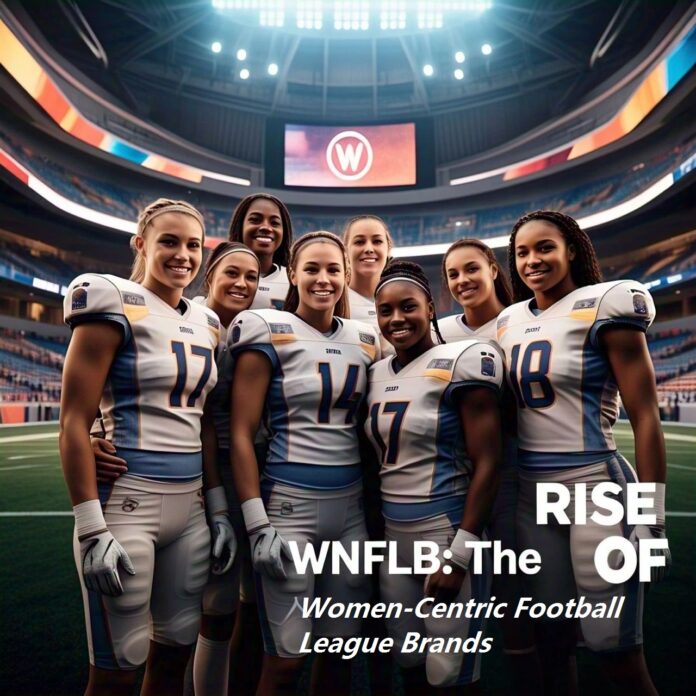Introduction
Although football has been regarded as a male sport, it has lately undergone considerable changes,” which I would argue is a common fallacy. The WNFLB is completely changing the landscape of the sport through the creation of women-centric football league brands. WNFLB and contemporaneous businesses not only engage their female athletes, but they also nurture and inspire female potential players, fans, and entrepreneurs.
This article aims to discuss the emergence of WNFLB, her influence in the sports industry, and the challenges and successes which define the future.
History of Women Football
Women football has faced scrutiny and is poorly recognized, but it does have a long history. The early attempts at professional women football leagues were either underfunded or lacked media attention. Attempts towards achieving equity in sporting activities, as well as more public interest in athletics, have helped fuel the creation of women football leagues. However, this is only a portion of the truth.
The rise of social media and WOM has given life to independent leagues and organizations aimed at nurturing a larger female audience base and instigating fair broadcast representation, pay, and improved conditions for women athletes.
Major Women-Centric Football League Brands
Numerous women’s Football leagues and associations have come into the limelight in the past few years. Some of these are is as follows:
1. Women’s National Football Conference (WNFC)
The WNFC is one of the most competitive professional women’s football divisions in the United States. It has picked up popularity from high quality game play, sponsored league structures, and sponsorships with hefty corporations like Adidas. The league aims at providing avenues for so-called female footballers within the structure of the league comparable to what male footballers enjoy.
2. Women’s Football Alliance (WFA)
The WFA is another stronghold in women’s football where competition is divided into several tiers depending on the skills of the participants. The league has acquired a good name by enabling people to seek upward mobility in professional athletics and at the same time is campaigning for more funding for Women’s Football.
3. Legends Football League (LFL)
The LFL, previously known as the Lingerie Football League always received criticism for bringing forth ideas that lacked core focus on the game itself, but as an entertainment extravaganza. The league was critiqued, but managed to aid the region of women’s football.
4. FIFA and Women International League
With the support of FIFA, women global football has developed greatly. The Women World Cup, UEFA Women Champions League, as well as the league contests in several European and American countries are being broadcasted and sponsored heavily.
Impact of WNFLB on the Culture of Sports
The emergence of the new women specific football leagues has changed the scope of the sports economy in the following ways:
1. Enhanced Visibility and Participation
WNFLB provided female athletes the platform and visibility enabling them to demonstrate their abilities and skills. More young females are now pursuing football, thus increasing participation at the base level.
2. New Sponsorship and Advertising Opportunities
Top companies have started to invest in women sports. The sponsorship of women’s football leagues by Nike, Adidas, and Visa is generating new revenues for these companies and hopefully, the long term financial sustainability of these organizations.
3. Increased Coverage and Consumption
Women football matches are now shown on television and streaming platforms, resulting in more opportunities for fan following and interaction. Social media has been central in promoting and expanding the audience for WNFLB.
4. Advocacy for Gender Equality
The expansion of women’s football leagues has amplified the advocacy for gender equity in sports. Debates about equal pay, improved facilities, and player conditions policy have intensified, prompting changes at national and international levels.
Challenges Faced by Women’s Football Leagues
As much ground as has been gained, the WNFLB still faces multiple challenges:
1. Financial Sustainability
Women’s football leagues are worse off in financial support when compared to men’s football, rather than their counterparts. There is a lack of sponsorship, ticket sales, and media offers which makes keeping the football business afloat nearly impossible.
2. Media Bias
Even with the gradual improvement, coverage of women’s football is still dismally proportioned in relation to the coverage of men’s football and women’s sports in general. A lot of the well-known sports media channels follow a culture of focus on men’s leagues which relegates women’s matches to low tier channels.
3. Public Perception
Football as a whole still suffers from the stereotype of a ‘man’s game’. Such perceptions, must change in order to generate interest and engagement by fans and spectators in women’s matches so as to increase public attendance.
4. Development Pathways
There are no pathways of development in women’s football unlike men’s, which has youth and professional leagues. This absence in many countries makes it hard for aspiring women players to make the jump to professional sports very seamlessly.
The Future of Women-Centric Football League Brands
The future of WNFLB looks promising, with several trends pointing toward continued growth:
1. Growth of New Professional Leagues
New leagues are springing up and established ones are growing in scope. There will be an increased number of international teams and cooperation in the coming years.
2. More Expenditure on Women Footballers
As more brands invest in sponsorships, advertisements, and infrastructure, a financial good will trickle down the leagues and the players in turn. A women’s football world is emerging and with it wage disparity is also recognized.
3. Improved Pay And Facilities
The case for the gender pay gap in football is gaining traction and it is just a matter of time till advocacy and funding makes women’s footballers enjoy better average salaries, improved training facilities and healthcare amenities.
4. Increased Advertising Support
As streaming services becomes more commonplace so does women’s football. But besides that, social media campaigns and influencer marketing will prop up the WNFLB and further its goals.
Conclusion
The evolution of the brands of women’s football leagues marks progress in the sports world. WNFLB is not just opening doors for women athletes, but actively fighting against old stereotypes and advocating for equality in football. Although there are challenges that still need to be addressed, things are looking promising, and the ongoing encouragement from fans and sponsors will make certain that women footballers continue to flourish.
FAQs About WNFLB
1. What does WNFLB mean?
WNFLB is an acronym for Women’s National Football League Brands with associations of different women’s football leagues and organizations across the globe.
2. What is the difference between women’s football and men’s football?
The level of the game is the same, but women’s football has other hurdles to get through, especially funding and media attention, as well as public attitude. Nevertheless, the level of skill, competitive spirit, and enthusiasm is always present in abundance.
3. What are the notable women’s football leagues?
Some of the notable women’s football leagues are The Women’s National Football Conference (WNFC), Women’s Football Alliance (WFA), and other worldwide league members of FIFA.
4. What are some reasons media coverage of women’s football is covered less than men’s?
Television networks have historically focused on men’s sports due to high pay-per-view ratings and sponsorship deal earnings. But slowly, more advocates are campaigning for equal treatment in sports which is changing this scenario.
5. In which ways can fans give support to women’s football?
Fans can support women’s football by patronizing matches, watching the broadcasts, following social media accounts of the teams, buying the club’s merchandise, and demanding media attention and funding for the sport.
6. What sustainability do women’s football leagues have for the future?
Women’s football leagues are expected to flourish in the future, as there is more investment, filming, and fan attendance, which will enhance opportunities for players as well as for the game as a whole.


